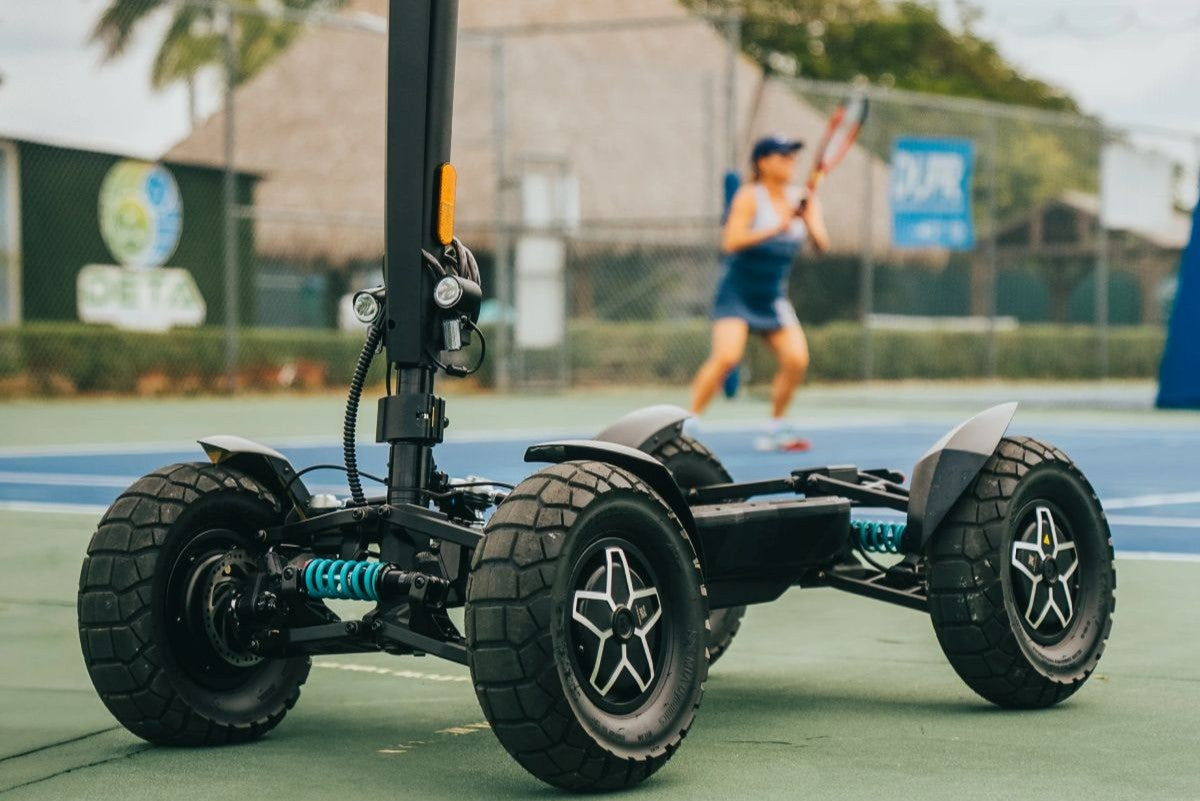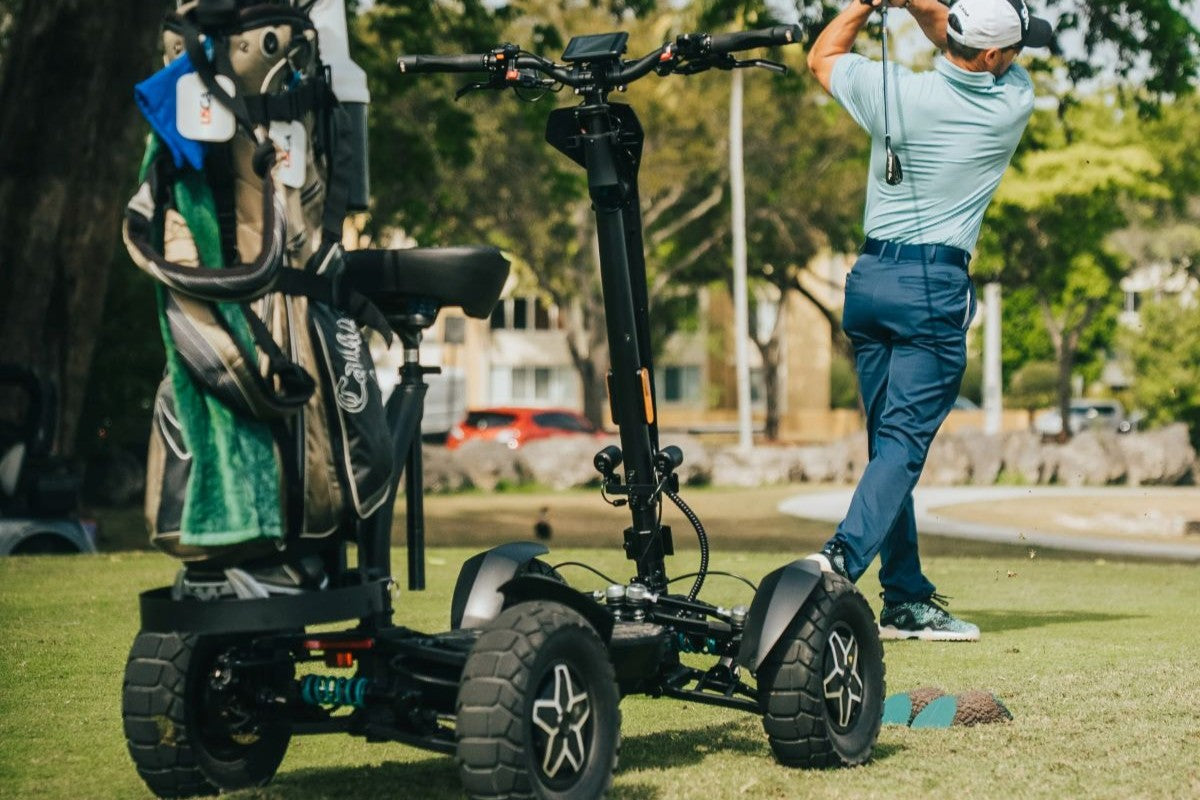Muddy rides are some of the best kinds of rides. The trails get wild, the machine gets dirty, and the fun doesn’t stop until you’re completely soaked and covered in it. But once the fun’s over, that mud isn’t just cosmetic - it’s hiding wear, trapping water, and slowly working its way into parts that matter. That’s where a solid ATV maintenance checklist comes in. After a ride through thick mud or deep puddles, your post-ride routine plays a bigger role than most riders realize. It’s not about cleaning for appearance. It’s about making sure your ATV actually lasts.
If you live for muddy trails, this checklist will keep your ride in top shape, so you can clean it up fast and get right back out there next weekend.
Tip 1: Rinse Off the Mud (But Do It Right)
You might be tempted to let the mud dry before tackling cleanup. Don’t. Dried-on mud traps moisture, causes corrosion, and makes it harder to inspect anything underneath. Use a hose to rinse off the frame, tires, undercarriage, suspension arms, and wheel wells as soon as possible.
Avoid high-pressure spray around seals, bearings, or electrical components. If you're riding something open like the MIA Four X4, you'll have easy access—but that doesn’t mean you can blast water in every direction. Focus on gently clearing buildup from every exposed surface.
Tip 2: Inspect and Clean the Air Filter
Mud loves air intakes. Even if your filter looks fine from the outside, pop it out after a muddy ride. Check for moisture, thick dust, or clumps of grit stuck inside the pleats. If it's wet or muddy, it needs to be cleaned or replaced. Riding with a clogged filter limits airflow and can lead to engine strain or overheating.
If your ATV uses a foam or reusable filter, clean it with the correct solution and let it dry fully before reinstalling. For disposable paper filters, don’t take chances, replace it if there's any question.
Tip 3: Check Tires and Remove Debris
Tires take a beating on wet, uneven trails. After the ride, remove any large debris jammed into the tread, like sticks, rocks, or hardened mud. These can affect balance or lead to punctures if left in place. Run your hand along each sidewall and look for cuts or bulges.
While you're at it, check tire pressure. Muddy terrain often causes slow leaks or uneven pressure loss, which can throw off handling next time you ride.
Tip 4: Clean and Check the Brakes
Brakes don’t work well when they’re packed with dirt. After a muddy run, inspect the calipers, pads, and rotors. Use a soft brush to remove grit and small rocks that might have wedged into tight areas. Spin each wheel by hand and listen for rubbing or squeaking. Any uneven drag could be buildup inside the brake assembly.
If your brakes feel weak or spongy, don’t ride again until you’ve cleaned and reset them. Brake failure on mud trails can lead to real trouble.
Tip 5: Re-Lubricate Chain and Joints
Mud is abrasive. Once it gets into your drivetrain or suspension, it acts like sandpaper. After the initial rinse and dry, re-lubricate all exposed moving parts. That includes your chain (if applicable), pivot joints, steering column, and suspension components.
On models like the MIA Four X4 that feature compact linkage systems, use a small applicator to reach pivot areas without over-spraying. A quick wipe and relube here will prevent premature wear and keep your ride smooth and responsive.
Tip 6: Dry and Secure Electrical Connections – ATV Maintenance Checklist Must-Check
Moisture and electronics never mix well. After hosing off your machine, take time to check under seats or panels where wiring is exposed. Dry off battery terminals, throttle connectors, and display wiring with a clean cloth. Inspect for loose plugs or corrosion.
Make sure all snap-fit connectors are locked in tight before storage. One loose plug now could mean no power later.
Tip 7: Wipe Down Suspension Components
Even sealed shocks and suspension arms collect buildup. Mud that dries around these parts can trap heat or restrict movement. Wipe down the entire length of your suspension components, both visible and tucked-in sections. Then check for oil leaks, bent brackets, or cracked bushings.
If you ride often, this check helps you spot wear early before it becomes a bigger, more expensive fix.
Tip 8: Don’t Forget the Footrests or Deck
Your footing is everything especially on a slick trail. After a muddy ride, clean your footrests, floorboards, or standing deck with soapy water and a brush. Dried mud in this area makes it harder to grip and easier to slip when you need balance the most.
Tip 9: Air Dry Before Storing
After cleaning, don’t roll your ATV straight under a cover or into a shed. Let it air dry completely. Trapped moisture leads to rust, electrical faults, and seal degradation over time. If possible, park it in a breezy shaded spot for a few hours after washing. This step is simple, but it keeps your whole post-cleaning effort from going to waste.
Tip 10: Make Next Time Easier
Before your next ride, spray a silicone protectant on the undercarriage, wheel wells, and fenders. It doesn’t stop mud, but it makes it harder for it to stick. That means faster rinsing and less risk of buildup getting into critical areas again.
If you’re riding in heavy mud often, this small habit saves serious time and reduces wear in the long run.
Why the ATV Maintenance Checklist Matters After Mud
You can’t stop mud from doing its thing but you can stop it from doing damage. Skipping even one part of this ATV maintenance checklist leaves your machine vulnerable to problems that take weeks to notice and hours to fix. Get in the habit, and you’ll ride more, fix less, and avoid the kind of surprise breakdowns that turn weekend plans into garage time.
If you’re looking for a ride that’s built to handle the mud without turning every cleanup into a full teardown, the MIA Four X4 is worth a look. It’s compact, rugged, and easier to maintain than most full-size ATVs. But no matter what you ride, the results are the same: take care of it now, and it’ll keep showing up when it counts.




Leave a comment
This site is protected by hCaptcha and the hCaptcha Privacy Policy and Terms of Service apply.